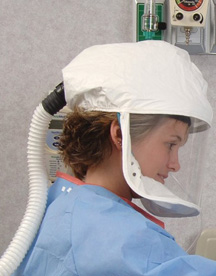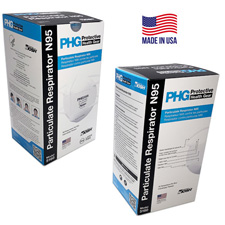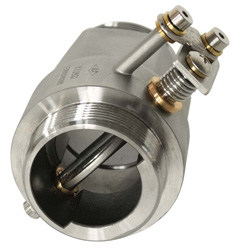| The Home page of ILPI's Safety Data Sheet (SDS) Resource, the leader in SDS information since 1995! | |
| The history and philosophy behind this resource. | |
| A curated collection of books and reference materials concerning Safety Data Sheets and closely related topics. | |
| Paste your plain text SDS into the SDS-Demystifier, and it will be converted into a hypertext-enriched document with links to detailed explanations of each key term. | |
| An extensive list of frequently asked questions about Safety Data Sheets including regulations, content, compliance, and more. | |
| A humorous take on Safety Data Sheet jargon. Fill in the blanks on our entry form to generate a personalized Unsafety Data Sheet to share with your coworkers. | |
| Since 1995, we've maintained this massive curated list of the best places to find Safety Data Sheets on the Internet. | |
| You are here! Way more than a glossary, this hypertext-enhanced resource covers hundreds of SDS-related terms and expert knowledge. Each entry includes both the SDS relevance and links to additional authoritative resources. | |
| Archived results of Safety Data Sheet related polls taken by some of our millions of site visitors | |
| The OSHA regulations behind SDS regulations, including the inspection guidelines and over 400 official interpretations letters under the Hazard Communication Standard | |
| Commercial suppliers of SDS authoring and management software as well as cloud compliance services. | |
| Commercial companies that will create SDS's for your specific needs as well as SDS translation companies. |

Safety signs, banners, and scoreboards? Get yours at Safety Emporium!
Definition
Ventilation is the process of supplying fresh air air to an enclosed space in order to refresh/remove/replace the existing atmosphere. Ventilation is commonly used to remove contaminants such as fumes, dusts or vapors and provide a healthy and safe working environment; in other words, it is an engineering control. Ventilation can be accomplished by natural means (e.g., opening a window) or mechanical means (e.g., fans or blowers).
By itself, the term does not indicate whether the exhausted air is filtered or cleaned before being discharged. Likewise, it does not indicate whether the incoming ("make-up") air is treated is heated, cooled or otherwise treated. Ideally, ventilation provides constant temperature, humidity and air quality within the enclosed space.
Additional Info

Breathe easy with respirators and accessories from Safety Emporium.
Ventilation is a critical concern in many occupational activities that generate dusts, fumes, mists, and vapors. Examples of such activities include welding, grinding, soldering, brazing, sanding, painting, finishing, and the use of volatile and/or flammable chemicals. It has also become an important issue for schools, restaurants and other spaces given the ease with which Covid-19 is transmitted through heating and cooling systems.
One can reduce the need for ventilation by reducing or minimizing the amount of airborne contaminant generated. Examples of such practices include:
- Keep containers of VOC's tightly closed when not in use. Better yet, utilize a material that does not contain VOC's.
- Change processes to avoid the formation of mists by, for example, dip coating instead of spray painting.
- Segregated work areas to minimize the spread of dust.
Ventilation systems for the control of hazardous materials in the workplace can be broken into two broad classes:
- General ventilation (also called dilution or fresh air ventilation) simply dilutes the concentration of the hazardous material in the air by bringing in fresh air. Examples include window and cooling fans - or simply opening a window. General ventilation is feasible only when all of the following apply:
- The quantity of hazardous material is small and constant.
- The air movement is sufficient to keep the concentration of hazardous material at acceptable levels.
- The materials have low toxicity and flammability.
- The material will not otherwise adversely affect the surroundings or other workers (corrosion, foul odors, harmful dusts).
- Local exhaust ventilation (LEV) is a form of engineering control that encloses the material, equipment or process as much as possible and ensures that air flow is into the enclosure at necessary rates. A good example is a fume hood. For local exhaust ventilation to work properly:
- Do not block or obstruct the air intake or the fresh make-up air source.
- Perform operations within the fume hood or air intake area.
- Do not position yourself between the contaminant source and the air intake - otherwise you will be exposing yourself to high concentrations of the contaminant.
- Make sure the ventilation system is operating properly and is not damaged.
- Ensure that the ventilation system is compatible with the materials you are using - for example, special fume hoods must be used for perchloric acid to prevent the buildup of dangerously explosive deposits in the ductwork!
Local exhaust ventilation is clearly the preferred method whenever feasible! In addition, local exhaust ventilation moves a much smaller quanitity of air much more efficiently - this results in large savings in heating and cooling costs.
Local exhaust ventilation systems typically have the following components:
- An enclosure or inlet to collect the contaminated air at the source of its generation (or as close as possible).
- Ductwork which conveys the contaminated air away from the source.
- In some cases, a filter or other device to remove the contaminant from the airstream.
- A fan or other air-moving device to provide the necessary air flow.
- An exhaust for discharging the cleaned or contaminated air.
Some specific examples of local exhaust ventilation systems include:
| Fume Hoods - These specialized, fixed cabinets contain and draw in contaminants and vent the contaminated air remotely (usually through a stack on the roof of the building). A good supply of properly conditioned makeup air is required so these systems require professional installation and maintenance. |  |
| Ventilating Blowers - These have an inlet and outlet hose to collect and move contaminated air away from the source. The model shown here (without the hoses) is portable, making it ideal for use in a garage or workshop. Ventilating blowers generally have the lowest capital cost of the systems shown. |  |
| Fume Extractors - These are small air cleaning devices used to filter mists, dusts and fumes. The filtered air is recycled - making it good for many common dusts. Because the air is recycled, this is not a suitable choice for toxic or flammable vapors. |  |
| Filtering Stations - Are fundamentally similar to the fume extractors shown above, but have better mobility. |  |
| Down Draft Work Stations or Tables - These use a blower to pull air away from the worker through slots or holes in the table top or work surface. Down draft stations can have a filtering/recirculating configuration (like the filtering station above) or the exhaust can be ducted to a remote point (like the ventilating blower above). |  |
Books Available

Get your PPE such as made in USA NIOSH-approved N95 masks from Safety Emporium.
NOTE: We may collect a share of sales or other compensation from the links in the following list:
- "Managing Indoor Air Quality, Fifth Ed", Hardcover, 350 pages, 2011. Estimated price $100.90. Info and/or order.
- "Indoor Air Quality: The Latest Sampling and Analytical Methods, Third Edition", Hardcover, 420 pages, 2018. Estimated price $130.05. Info and/or order.
- "Biological Risk Engineering Handbook: Infection Control and Decontamination (Industrial Hygiene Engineering)", Hardcover, 528 pages, 2002. Estimated price $162.95. Info and/or order.
- "Workshop Dust Control: Install a Safe, Clean System for Your Home Woodshop ", Paperback, 136 pages, 2010. Estimated price $19.95. Info and/or order.
- "Residential Ventilation Handbook 2nd Edition: Home Ventilation Management", Paperback, 424 pages, 2017. Estimated price $39.20. Info and/or order.
SDS Relevance
Some Safety Data Sheets' will contain specific mention of engineering controls such as local exhaust ventilation. These should be found in Section 8 (exposure controls/personal protection). Remember, the preferred methods for reducing chemical exposure, in order of general effectiveness, are:
- Substitution of less hazardous materials or processes.
- Engineering controls.
- Administrative controls
- Personal protective equipment (PPE)
Also remember that flammable materials or combustible dusts can be ignited if your ventilation system is not properly designed and maintained.
Further Reading

Vent your flammable storage safety cabinets safely with Safe-T-Vent thermally-actuated dampers from Safety Emporium.
- Ventilation at the US Federal OSHA web site.
- Ventilation Of Confined Spaces at Michigan State University.
- More examples of downdraft tables available from Schubert Enviromental Equipment.
- Indoor Air Pollution at the NIH's MedLine Plus Encyclopedia.
- Ventilation for Homes at the US EPA.
- Introduction to Indoor Air Quality at the US EPA.
- COVID-19 Guidance on Ventilation in the Workplace at OSHA.
- Ventilation in Schools and Childcare Programs at the US Centers for Disease Control and Prevention (CDC).
- These two articles on Laboratory ventilation are great resources, but a subscription is required if you don't belong to a school or company with paid access:
See also: administrative controls, dust, engineering controls, fume, personal protective equipment (PPE), respirator.
Additional definitions from Google and OneLook.